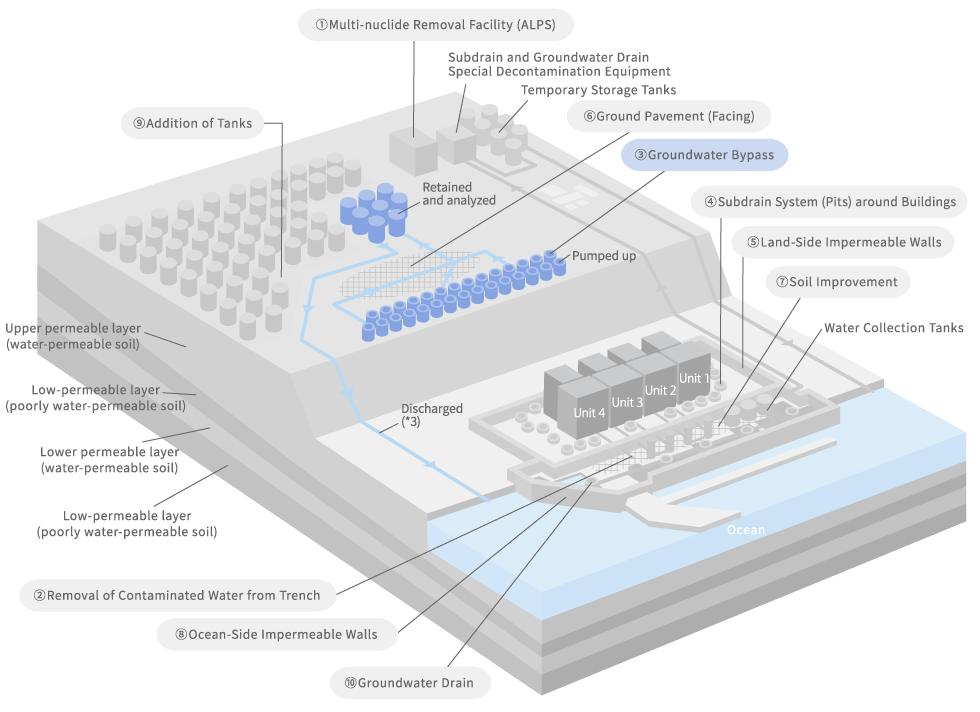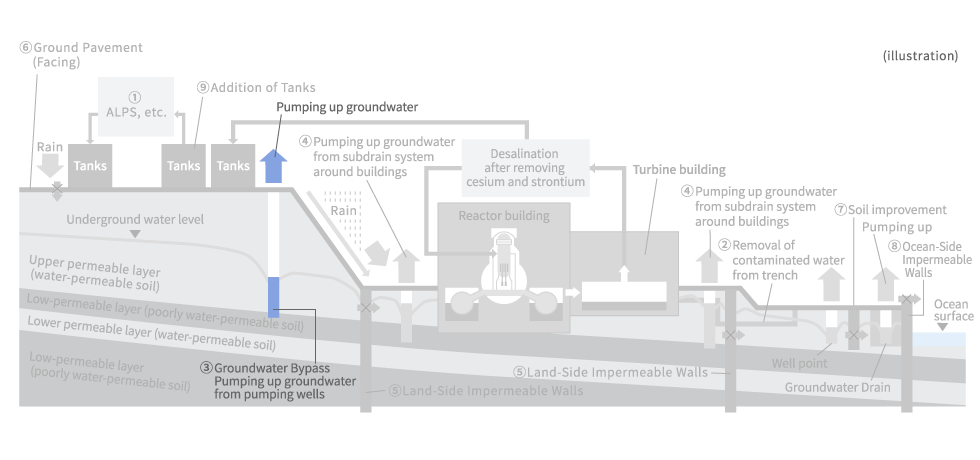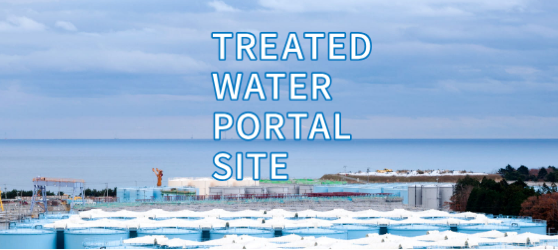Pumping Up Groundwater from Groundwater Bypass Pumping Wells
To reduce the volume of contaminated water, which increases when groundwater flows into reactor buildings or other contamination sources, a groundwater bypass was installed, in line with the policy of keeping water away from contamination sources. In this undertaking, first of all groundwater flowing from the mountain side of the site is pumped up from wells (pits) in locations away from the reactor buildings, etc. The pumped-up groundwater, after being confirmed to meet national effluent standards, is discharged into the ocean, reducing the amount of groundwater coming into proximity with the reactor buildings, etc.
Overview of Groundwater Bypass
Overall view of groundwater bypass arrangement

Cross-section view of groundwater bypass

Steps from pumping up to discharge

- *1 Transferred to temporary storage tanks. As a measure to prevent radioactive substances in the air from getting into the tanks, air intake pipe openings of the tanks are installed in controlled areas free of contamination concerns.
- *2:Regular water quality analysis is also performed by a third-party agency.
- *3:Water is discharged only if it has been confirmed to be within allowable limits, using as standards the operational targets set by TEPCO, which are well below the regulatory limits and below the WHO guidelines on drinking-water quality.
Status of sampling and monitoring
Regular radioactivity analysis is performed on pumping wells and temporary storage tanks. To determine the impact on the maritime environment, radiation levels are also measured at the time of discharge and in the bay and other areas around the power station.
















